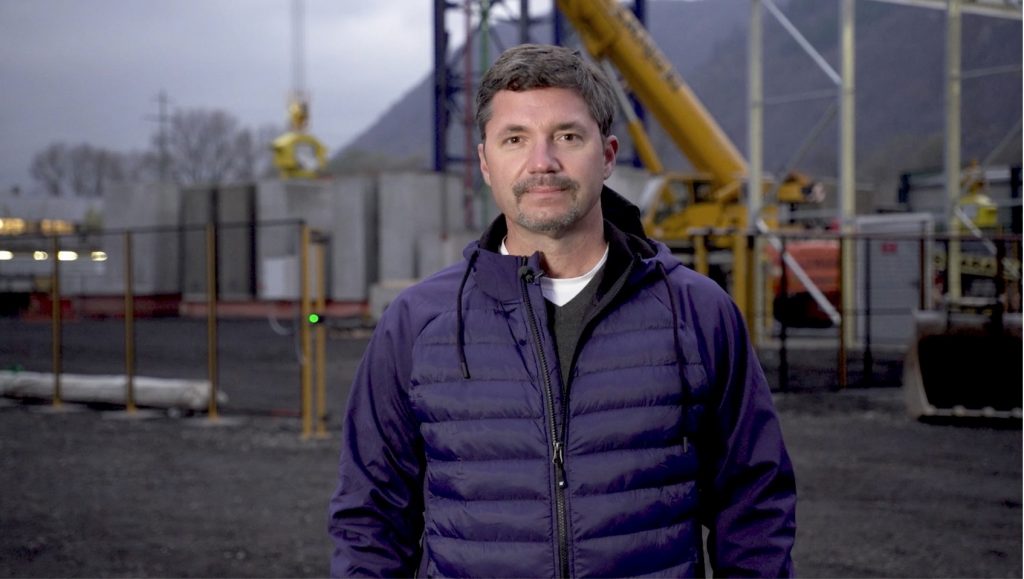Energy Vault preps to go public, could raise $388M
IN THIS ARTICLE
- Banking & Finance Topic
- Jorge Mercado Author
By Jorge Mercado Thursday, October 21st, 2021

Westlake Village-based Energy Vault disclosed details of its financial performance for the first time in an Oct. 18 filing with the U.S. Securities and Exchange Commission, filed in advance of its public stock offering and its pending merger with a special purpose acquisition company.
Energy Vault, a green energy storage company, agreed to go public via a merger with Novus Capital Corp. in a deal announced Sept. 9 and worth up to $388 million. Once the deal is complete, the combined company will have an enterprise value of about $1.1 billion, according to a Sept. 9 news release from Energy Vault.
Norvus is a SPAC that trades on the New York Stock Exchange under the ticker symbol NXU. Once the merger is complete, which is expected to happen in the first quarter of 2022, Energy Vault will begin trading on the NYSE under the symbol GWHR.
In 2020 and 2021, SPAC deals have become nearly as common as traditional IPOs. Russell Terry, a lawyer at Reicker Pfay, Pyle, & McRoy in Santa Barbara with expertise in SPACs, told the Business Times there are a variety of reasons companies choose to go public via a SPAC.
“Some people think they’re more cost effective, in many cases they’re faster, and you can have more certain pricing than a traditional IPO because it’s a privately negotiated transaction,” Terry said. “There’s also benefits for the investors, because in a SPAC, investors have the right to essentially get their money back if they’re not satisfied with the deal.”
The SPAC investors get their money back if a deal between Novus and Energy Vault or another business entity is not complete by Feb. 8, 2023.
Novus Corp. currently has $288 million from its own IPO that was completed on Feb. 8. That total could shrink if investors decide to pull out, though none have done so yet.
Another $100 million has been raised through a PIPE, or a private investment in a public entity, with 10 million shares being sold at $10 per share. These funds will be released to the combined company upon completion of the deal, according to the filing.
The combination of a SPAC merger and a PIPE “is like a double IPO,” Terry said. “The SPAC going public itself is the first IPO and it raises money from the public. The PIPE is closer to the second IPO, where the shell knows the target company … and it negotiates a PIPE to raise extra money for the company in case some of the original stock investors ask for their money back.”
If none of the public shareholders exercise their redemption rights, then stockholders of Energy Vault will own 108.9 million shares of combined company stock, representing approximately 70.7% of the total.
According to the filing, 28.75 million shares of combined company stock will be made available to the public, representing 18.6% of the total outstanding shares.
PIPE subscribers will own 6.5% of shares while initial stockholders will own 3.8% of shares.
The filing also states that CEO of Energy Vault, Robert Piconi, will own 9.9% of the combined company, equating to about 15.2 million shares.
Novus shares closed at $9.90 on Oct. 19. At that price, Piconi’s shares would be worth a minimum of $150 million, though that total will probably rise once the combined company begins trading.
Henry Elkus, the CEO of Helena — which invested $20 million into Energy Vault in July — will own 6.5% of the combined company. Andrea Pedretti, who co-founded Energy Vault alongside Piconi and is the chief technology officer, will own 2.3%.
SoftBank Vision Fund, an investor in Energy Vault’s $100 million Series C capital raise in August, will own 10% of the combined company. IdeaLab X, an incubator where Piconi said Energy Vault was founded, will also own more than 10% of the company.
According to the Oct. 18 SEC filing, Piconi took home $377,968 as CEO of Energy Vault in 2020, about $42,000 of which came from bonuses. Pedretti made $283,655 in 2020 while Chief Product Officer Marco Terruzzin made $322,985.
Trruzzin made $100,000 in bonus salary and was awarded 20,000 shares of Energy Vault common stock.
Energy Vault develops gravity-based energy storage systems that the company says are more durable and efficient than other methods to store energy, such as batteries. The system uses cranes that lift heavy bricks to store renewable energy and then lower them to release it.
Energy Vault saw its first big commercial win recently, after connecting its first energy storage system to Switzerland’s national grid in 2021.
But the company has not been profitable yet. In 2020, its losses exceeded $24 million, more than double its losses in 2019. In the first half of 2021, the company had a net loss of $12.4 million.
Energy Vault did not disclose revenue numbers for any year, including so far through 2021.
Its new SEC filing states that the company expects to incur significant expenses and continuing losses for the foreseeable future. Its systems have significant upfront costs, and it is counting on renewable energy to become more popular than it is today.
“Even if we do achieve profitability, we may be unable to sustain or increase our profitability in the future,” the filing read.
As of June 30, Energy Vault had $33 million in total assets, including $17.6 million in cash and cash equivalents, and debts totaling $6.4 million.










